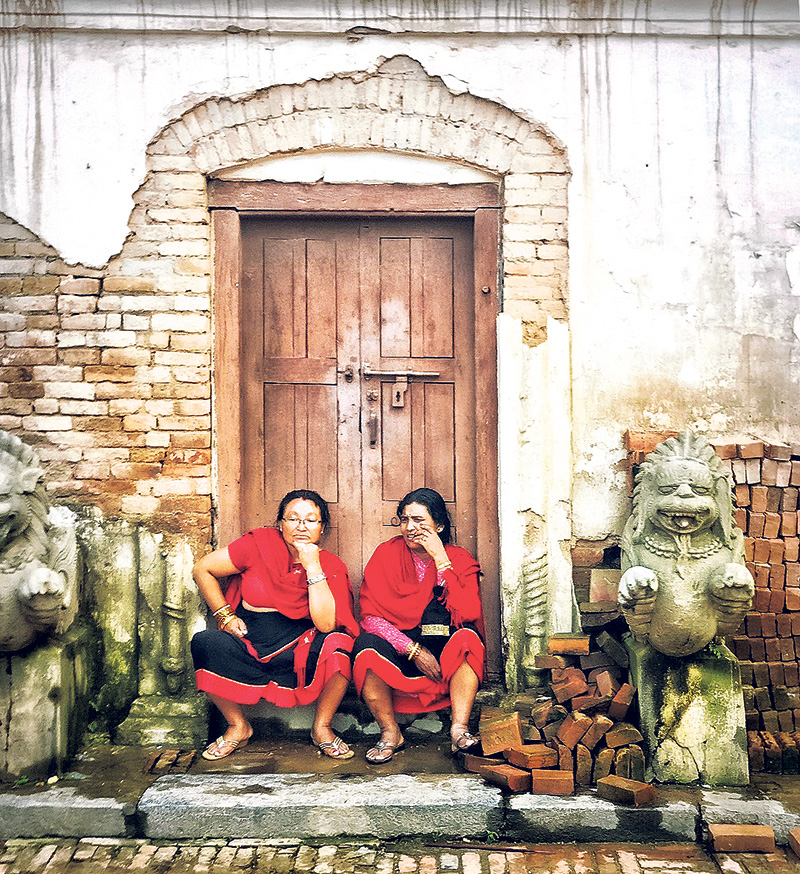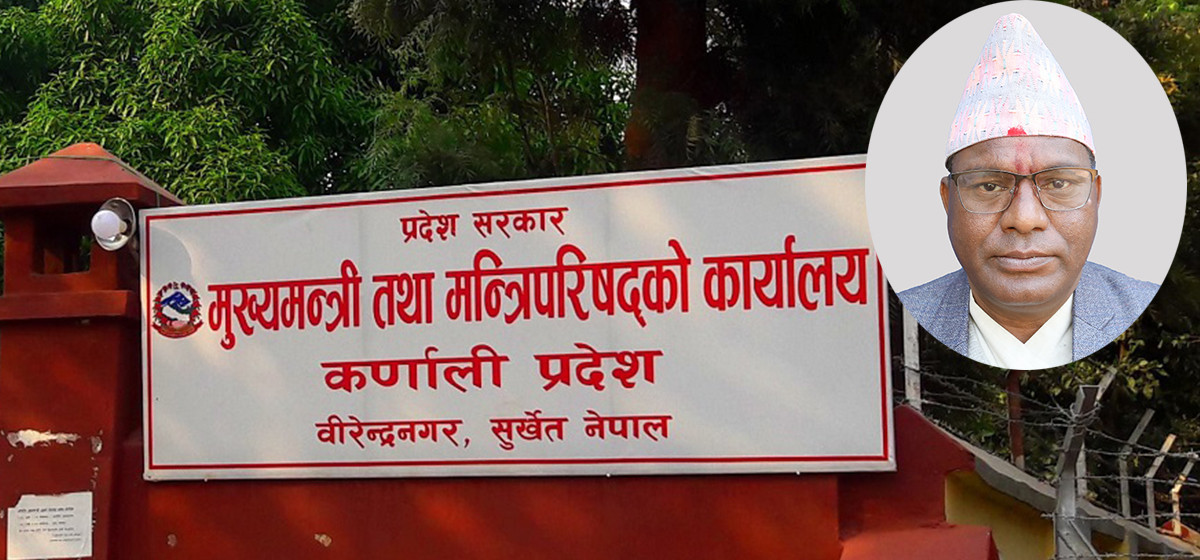
OR

Nipun Prabhakar came to Nepal from Delhi, India, to work on a post earthquake reconstruction project. An architect by profession, Prabhakar quickly became fascinated by the various styles of doors he saw in Kathmandu. “I started taking pictures of the doors in and around my workplace from my phone,” says Prabhakar. “These unique doors reflected the culture of Kathmandu and it was also pleasing to simply look at them,” he adds.
Prabhakar says that most of the capital cities in Asia have a great western influence. “Even back in Delhi, I have noticed that architectural designs are not traditional anymore,” he says adding that Kathmandu felt different. The ancient architecture was still distinctly visible in the public as well as private domain.
Having a background in photojournalism, Prabhaker eventually created a professional photo series of doors found in and around Kathmandu. “After the earthquake I found people discarding traditional doors of the destroyed houses. I wanted to capture them as I was unsure if I could see those doors the next time I visited Kathmandu,” he says explaining that traditional doors are now hard to find in cities and this was his attempt to preserve them forever.
According to Prabhakar, there were many beautifully designed doors around the Durbar Squares but his primary motive was to capture the small ones. “The idea wasn’t to document doors in public spaces. They have been documented and people already know about them,” says Prabhakar. He wanted to capture small doors of private houses that are an integral part of people’s life and traditions.
Whenever Prabhakar got time away from work he started taking pictures of different doors. In a span of five months, he documented more than 160 doors around the valley. “Things are generally supposed to evolve with time,” says Prabhakar. “However, in South Asia changes are usually drastic. Ancient architecture does not evolve but they are just replaced with the western ones,” he exclaims sadly. “Seeing those beautiful doors in Kathmandu, I wanted to capture them before they were substituted by modern ones,” he adds.
After the earthquake of 2015, most traditional houses were rebuilt in a modern style, and he also wanted to capture that transition. “There was a lot of destruction, yet the doors of the houses stood still and intact. They appeared to be protecting the culture and the city,” states Prabhakar.
According to Prabhakar, doors in modern societies are just a barricade between the outside and the inside world. “In traditional cities like Kathmandu, doors are much more than that. It’s a place where people spend most of their time,” he says. In Kathmandu, Prabhakar noticed that doors also held strong cultural and religious connotations. “People, especially from the Newari culture, worshiped their doors by decorating it with colorful Khadas,” he says adding that often in the mornings and evenings he found people socializing around the doors of their houses. “Elders of the house would gather around the door, soaking the warm sun and talking about life,” he explains. And Prabhakar eventually became interested in capturing the lives around such doors as well. “In Kathmandu, I noticed, doors were an extremely active place,” he says.
He also mentions that the little anecdotes about how doors evolved in Kathmandu were extremely fascinating. He was told that in the Newari culture people usually put Kalash (brass utensils) filled with water in front of their door before leaving the house. Eventually, they were made into symbols and carved into doorframes. The paintings, according to Prabhakar, around the doors in Newari houses symbolized the welcoming of a new bride. “These little traditions made my visit to Kathmandu really fascinating,” he explains. Prabhakar was even told that various symbols incorporated in the doors of temples also celebrated death.
Prabhakar is now working on publishing a book titled ‘The Doors of Kathmandu’. “My book will have short stories and pictures of the doors that I have captured in Kathmandu,” he says adding that he is currently working out the details with his mentors. “Through my book I intend to revive the forgotten side of Kathmandu,” concludes Prabhakar.
You May Like This

Valley Pollution Index for February 8, 2020
Valley Pollution Index for February 8, 2020 ... Read More...

Valley pollution levels for January 13, 2020
Valley pollution levels for January 13, 2020 ... Read More...








Just In
- Youth found dead in a hotel in Janakpur
- CM Kandel to expand cabinet in Karnali province, Pariyar from Maoist Center to become minister without portfolio
- Storm likely to occur in Terai, weather to remain clear in remaining regions
- Prez Paudel solicits Qatar’s investment in Nepal’s water resources, agriculture and tourism sectors
- Fire destroys 700 hectares forest area in Myagdi
- Three youths awarded 'Creators Champions'
- King of Qatar to hold meeting with PM Dahal, preparations underway to sign six bilateral agreements
- Nepal's Seismic Struggle and Ongoing Recovery Dynamics



_20240423174443.jpg)







Leave A Comment